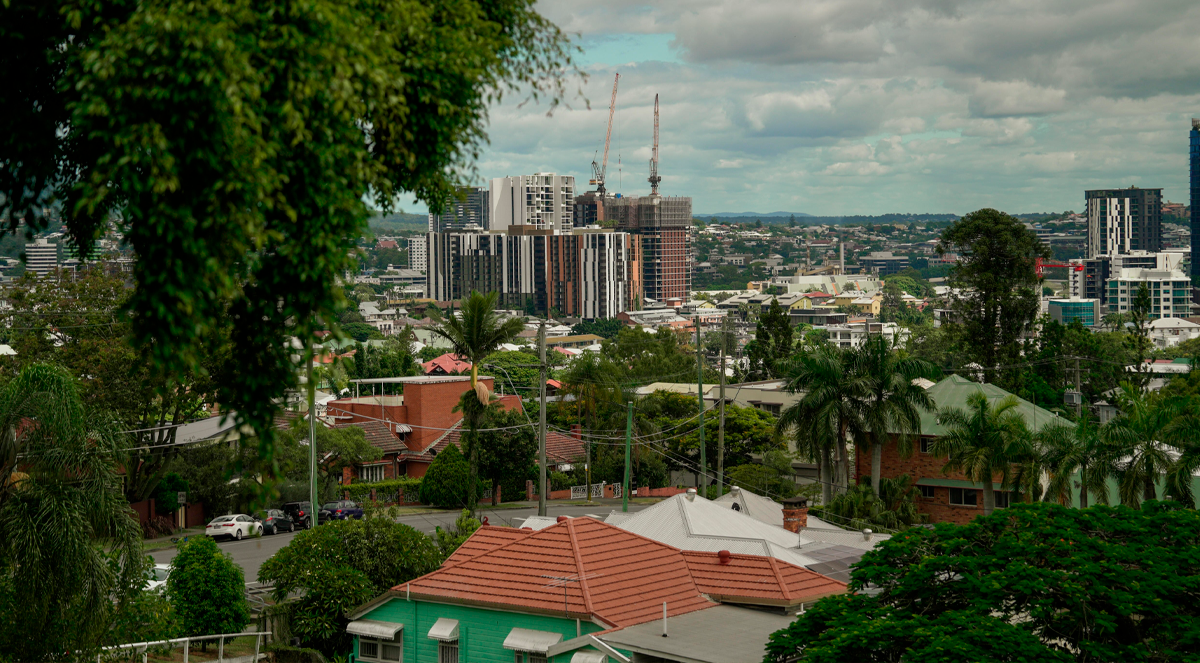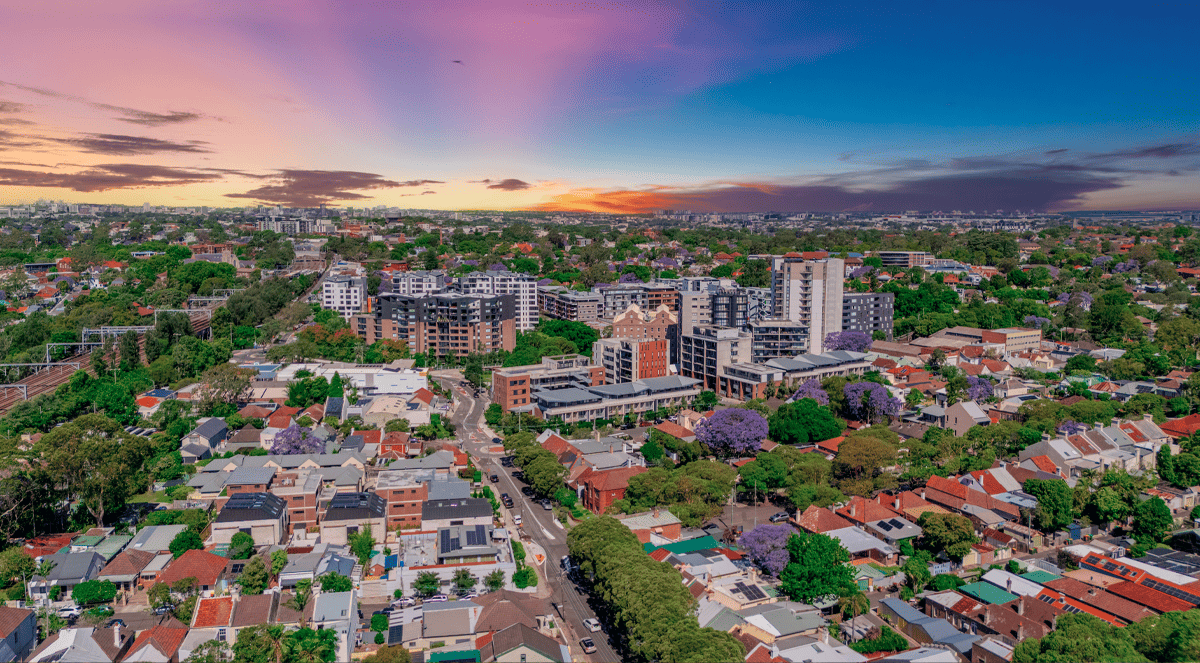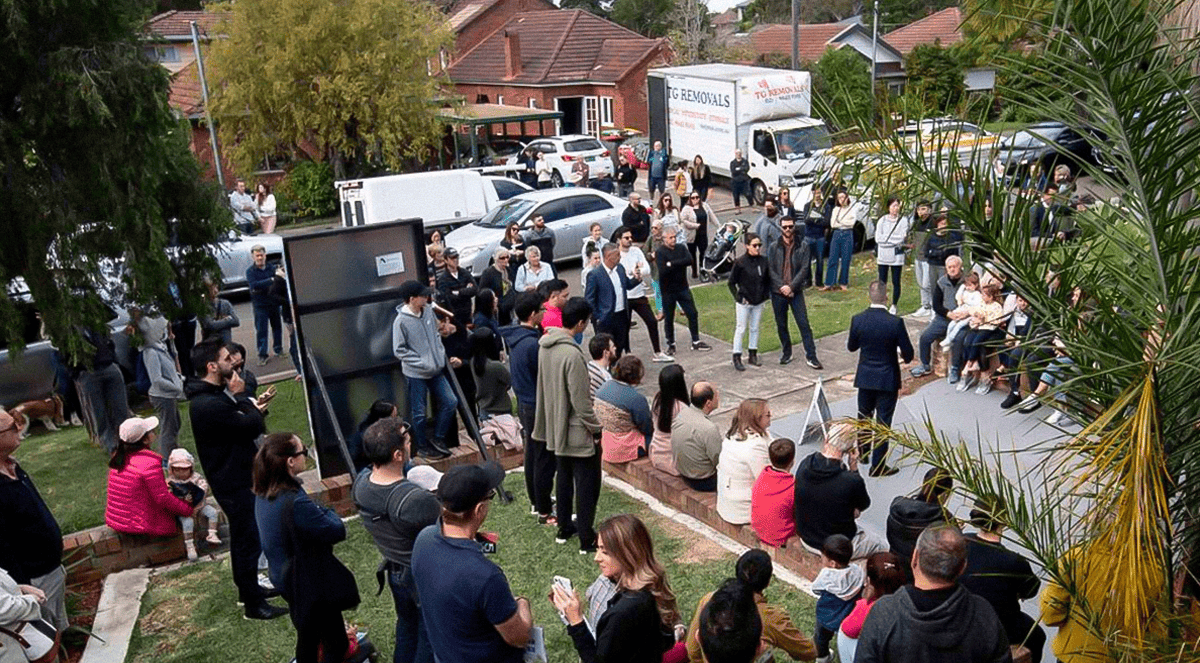.png)
Image by Leonie Thorne/ABC News
KEY POINTS
- Over 210,000 Western Australian households now consider their housing “unaffordable” - a 91% jump since 2022
- Median Perth rents have risen 76% since 2020 to $740/week, while the median house price has risen by 84% to $851,000
- WA built a record 20,000 homes in 2024 but still fell 4,000 short of annual targets; Perth’s rental gap reached 7,700 amid population growth and building delays
A new report has revealed the full extent of Western Australia’s housing crisis, with housing costs now overwhelming hundreds of thousands of the state’s residents and rental affordability plunging to crisis levels.
More than 210,000 households in WA now consider their housing “unaffordable”, up a staggering 91% since 2022, according to the Housing Affordability in Western Australia 2025 Report.
“We are witnessing a breakdown in the ability of WA’s housing system to meet the needs of ordinary West Australians,” says Professor Alan Duncan, the Head of Curtin University’s Bankwest Economics Centre and the report’s lead author.
“We’re building more homes, but it’s not enough to meet demand.
“Housing costs continue to rise faster than incomes and what’s being built often isn’t where people want or need to live.”
The details
The report paints a dire picture: rents in Western Australia have increased 76% since 2020, pushing Perth’s median weekly rent to $740, while just 39% of renters and 48% of mortgage holders consider their housing costs affordable.
The state’s booming population — up 4.2% since March 2023, with 85% of growth in the Greater Perth area — has collided with a sluggish housing supply.
Despite a record 20,000 new homes being completed in 2024, WA still fell 4,000 homes short of the National Housing Accord’s annual target of 24,000 for the booming state.
Rental shortfall
Meanwhile, the shortfall in rental properties is growing.
“In Perth, just 694 new rental dwellings were added in the 18 months to September 2024 – while the state’s population grew by 119,000,” Professor Duncan says.
“That leaves a shortfall of 7700 rental homes just to keep pace with population growth.
“Even with urgent action, relief is at least 12 to 18 months away, with rental costs unlikely to stabilise until 2026.”
The report also reveals how the lack of affordable housing is reshaping the state’s social geography.
“As affordable homes vanish from inner and middle suburbs, low and moderate-income renters are being pushed to the outer edges of the city where jobs and services are scarcer,” says Professor Duncan.
“This is reshaping the social map of our state and deepening inequality.”
Slow construction
Construction delays are further compounding the issue.
Build times in Western Australia - already the slowest in Australia - have now doubled to more than 15 months, adding up to $100,000 to the average cost of a new home.
“Despite some signs of a softening housing market, there has been an accumulation of pressure on households from years of high housing costs, low rental vacancies and an inadequate supply of new stock,” Professor Duncan says.
Consequences
The ongoing housing crisis is also putting pressure on the state’s already stretched health system.
“Our report also highlights the relationship between poor housing and poor health, with 43% of those in unaffordable housing reporting physical health issues and more than 40% report mental health concerns,” says report co-author Professor Steven Rowley.
The priority social housing waitlist has exploded by 330% since 2018.
And despite 1,700 social housing units added in the past two years, Professor Rowley says the system is still falling short.
“We need around 16,000 more social housing units to raise WA’s social housing provision to around 5%, roughly equivalent to levels in NSW and SA.”
Possible solutions
The Housing Affordability in Western Australia 2025 Report outlines more than 20 recommendations to try to alleviate the crisis in WA, but Professor Alan Duncan makes clear he believes these ideas have merit across the country.
“Australia is 200,000 social housing units short of meeting current need, which means we need fast-tracked developments on public land, support for build-to-rent models, and an introduction of inclusionary zoning in well-serviced suburbs,” he says.
“We must ensure new supply matches the needs of diverse households, not just large family homes on the fringes but compact, affordable homes close to work, transport, and community infrastructure.”
Professor Duncan also says state and territory governments have a role to play in “shifting the incentives” that he says “shape housing decisions”.
“Replacing stamp duty with a broad-based land tax would free up housing stock and reduce transaction costs, and tenure reform could offer renters more stability while giving owners greater flexibility.”
Alan Duncan says housing quality also needs to be improved, saying that over 300,000 Australian renters are living in poor-quality homes.
“Minimum standards for safety, liveability and energy efficiency must be enforced – renters should not have to choose between affordability and basic comfort.”
He concludes with a stark warning:
“Without bold, coordinated action, we risk locking an entire generation out of secure, affordable housing — which will have many negative flow-on effects.”
Those flow-on effects include undermining social cohesion, further impacts on public health, and stunting WA’s economic productivity.
“We can get housing right with integrated policy solutions, long-term planning and genuine collaboration — but the time to act is now,” he says.
Stay Up to Date
with the Latest Australian Property News, Insights & Education.




.png?width=292&height=292&name=Copy%20Link%20(1).png)
 SIGN UP FOR FREE NEWSLETTER
SIGN UP FOR FREE NEWSLETTER





.jpg?width=1920&height=1080&name=Warning%2c%20You%20Might%20Be%20Facing%20Higher%20Taxes%20Soon%20(1).jpg)





.png?width=1920&height=1080&name=Rate%20Drops%20Signal%20BIGGEST%20Property%20Boom%20in%20DECADES%20(1).png)

.jpg?width=1920&height=1080&name=Labor%20vs%20Liberal%20These%20Housing%20Policies%20Could%20Change%20the%20Property%20Market%20Forever%20(1).jpg)
.jpg?width=1920&height=1080&name=QLD%20Slashes%20Stamp%20Duty%20Big%20News%20for%20Investors%20%26%20Home%20Buyers%20(1).jpg)
.jpg?width=1920&height=1080&name=Trump%20Just%20Slapped%20Tariffs%20%E2%80%93%20Here%E2%80%99s%20What%20It%20Means%20for%20Australia%20(1).jpg)
.jpg?width=1920&height=1080&name=Federal%20Budget%202025%20More%20Debt%2c%20No%20Housing%20%E2%80%93%20Here%E2%80%99s%20What%20You%20Need%20to%20Know%20(1).jpg)
.jpg?width=1920&height=1080&name=Australias%20Housing%20Crisis%20is%20about%20to%20get%20MUCH%20Worse%20(New%20Data%20Warns).jpg)
%20(1).jpg?width=1920&height=1080&name=Australias%20RENTAL%20CRISIS%20Hits%20ROCK%20BOTTOM!%20(2025%20Update)%20(1).jpg)
%20(1).png?width=1920&height=1080&name=Is%20Adelaide%20Still%20a%20Good%20Property%20Investment%20(2025%20UPDATE)%20(1).png)
.jpg?width=1920&height=1080&name=RBA%20Shocks%20with%20Rate%20Cuts!%20What%E2%80%99s%20Next%20for%20Property%20Investors%20(1).jpg)
%20(1).jpg?width=1920&height=1080&name=I%20Predict%20The%20Feb%20Rate%20Cut%20(My%20Price%20Growth%20Prediction)%20(1).jpg)
.png?width=1920&height=1080&name=Why%20Property%20Prices%20Will%20Rise%20in%202025%20Market%20Predictions%20(1).png)
.jpg?width=1920&height=1080&name=Why%20Investors%20Are%20Choosing%20Apartments%20Over%20Houses%202%20(1).jpg)
.jpg?width=1920&height=1080&name=Why%20Rate%20Cuts%20Will%20Trigger%20A%20Property%20Boom%20(1).jpg)
.jpg?width=1920&height=1080&name=Retire%20On%202Million%20With%20One%20Property%20(Using%20SMSF).jpg)
.jpg?width=1920&height=1080&name=4%20Reasons%20Why%20You%20Should%20Invest%20in%20Melbourne%20Now%20(1).jpg)
%20(1).jpg?width=1920&height=1080&name=Old%20Property%20vs%20New%20Property%20(Facts%20and%20Figures%20Revealed)%20(1).jpg)
%20(1).jpg?width=1920&height=1080&name=Will%20The%20New%20QLD%20Govt%20Create%20a%20Property%20Boom%20or%20Bust%20(My%20Prediction)%20(1).jpg)
%20Scott%20Kuru%20(1).jpg?width=1920&height=1080&name=Inflation%20Hits%20Three-Year%20Low%20(Will%20RBA%20Cut%20Rates%20Soon)%20Scott%20Kuru%20(1).jpg)
.jpg?width=1920&height=1080&name=How%20to%20Buy%20Investment%20Property%20Through%20SMSF_%20The%20Ultimate%20Guide%20(1).jpg)
.jpg?width=1920&height=1080&name=Victoria%20Slashes%20Stamp%20Duty%20Melbourne%20Set%20to%20Boom%20Scott%20Kuru%20(1).jpg)
.png?width=1571&height=861&name=Are%20Foreign%20Buyers%20Really%20Driving%20Up%20Australian%20Property%20Prices%20(1).png)
.jpg?width=1920&height=1080&name=The%20Single%20Factor%20That%20Predicts%20Property%20Growth%20Regions%20(1).jpg)
%20Scott%20Kuru%20(1).jpg?width=1920&height=1080&name=My%20Prediction%20On%20Rates%20%26%20Negative%20Gearing%20(Market%20Crash)%20Scott%20Kuru%20(1).jpg)

-1.png?width=1920&height=1080&name=Major%20Banks%20Cut%20Rates%20Will%20RBA%20Follow%20Suit%20(Sept%20Rate%20Update)-1.png)
%20Scott%20Kuru-1.png?width=1920&height=1080&name=Rate%20Cut%20Coming%20What%20New%20Zealands%20Move%20Means%20for%20Australia%20(Sept%20Prediction)%20Scott%20Kuru-1.png)
%20(1).jpg?width=1920&height=1080&name=Buy%20when%20the%20interest%20rates%20are%20high!%20(Why%20you%20must%20buy%20now!)%20(1).jpg)
.jpg?width=1920&height=1080&name=Carms_Revised%20Taxes%20Due%20Aug%209%20YT%20Thumbnail02%20(1).jpg)
.jpg?width=1920&height=1080&name=Carms_Too%20Little%20Too%20Late%20Aug%207%20YT%20Thumbnail01%20(1).jpg)









.jpg?width=1920&height=1080&name=Carms_Rate%20Drop%20In%20July%20Jun%2010%20YT%20Thumbnail02%20(1).jpg)
.jpg?width=1920&height=1080&name=Carms_Own%20a%20Property%20V6%20Jun%205_YT%20Thumbnail%20(1).jpg)









.png?width=1920&height=1080&name=Artboard%201%20(3).png)






.jpg?width=1920&height=1080&name=YT%20thumbnail%20%20(1).jpg)

